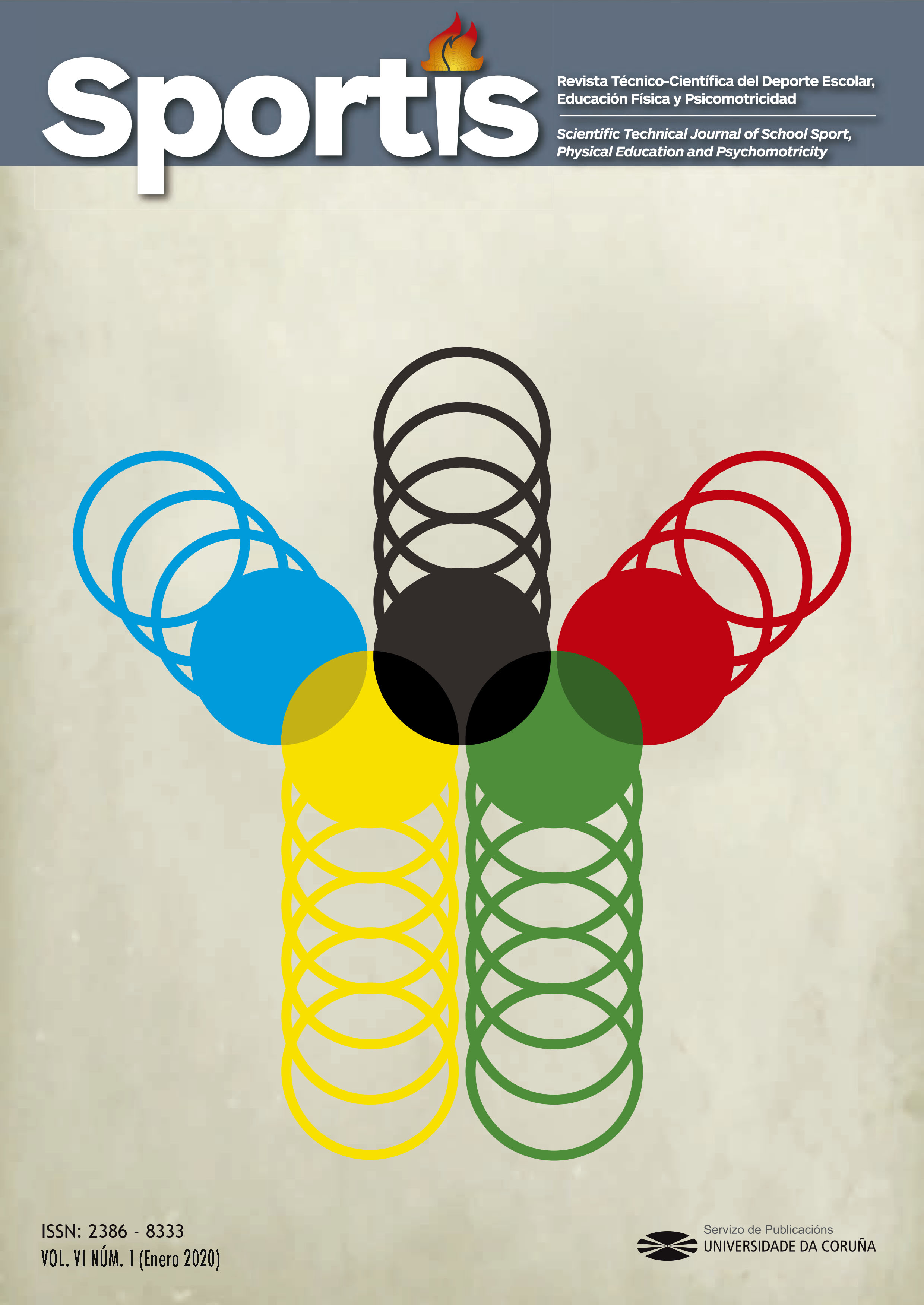Actividad física y niveles de condición física de los estudiantes del Departamento de Educación Física y Deportes durante la graduación
Contenido principal del artículo
Resumen
Este estudio tuvo como objetivo comparar la actividad física y el estado físico de los estudiantes del departamento de educación física y de deportes, e investigar la relación entre los parámetros físicos y el éxito académico. Veinticinco (13 hombres y 12 mujeres) se ofrecieron como voluntarios para participar en este estudio. Se analizó la composición corporal medida a través del método de impedancia bioeléctrica, se realizó una prueba de funcionamiento de la lanzadera. Se realizó un cuestionario de actividad física internacional. Los antecedentes deportivos y los puntos de examen de educación superior, los niveles de actividad física y el éxito académico han sido similares en ambos sexos. Sin embargo, los resultados de la capacidad aeróbica disminuyeron en comparación con la entrada a la universidad con la graduación en estudiantes masculinos y femeninos. Además, hubo una correlación entre el porcentaje de cambio de VO2max y el éxito académico. Estos resultados indican que las pruebas físicas no afectan las cantidades de graduación del maestro de educación física. Sin embargo, la relación entre el porcentaje de cambio de VO2max y el éxito académico es un indicador importante de que los deportes activos y la actividad física pueden ser beneficiosos. Para crecer mejores y más maestros de educación física cuantitativos, los estudios futuros requieren investigar las pruebas físicas actuales que realizaron la entrada de educación física y educación de maestros de deportes y consultas que hacen pruebas físicas un buen método para lograr los objetivos solicitados.
Palabras clave:
Descargas
Detalles del artículo
Citas
American College Health Association. Healthy Campus 2010: Make it Happen. Baltimore, MD: American College Health Association; 2002.
Baghurst, T., & Bryant, L. (2012). Do as I say not as I do: Improving the image of our profession. Strategies, 25(4), 11-13. https://doi.org/10.1080/08924562.2012.10592156
Deliens, T., Deforche, B., De Bourdeaudhuij, I., & Clarys, P. (2015). Determinants of physical activity and sedentary behaviour in university students: a qualitative study using focus group discussions. BMC public health, 15(1), 201. https://doi.org/10.1186/s12889-015-1553-4
Donald F. Staffo & William F. Stier Jr. (2000) The Use of Fitness Tests in PETE Programs, Journal of Physical Education, Recreation & Dance, 71:5, 48-52. DOI: https://doi.org/10.1080/07303084.2000.10605146
Douglas KA, Collins JL,Warren CW, et al. Results from the 1995 National College Health Risk Behavior Survey. J Am Coll Health. 1997;46:55-66. DOI: https://doi.org/10.1080/07448489709595589
Gibson AL, Holmes JC, Desautels RL, Edmonds LB, and et al. (2008). Ability Of New Octapolar Bioimpedance Spectroscopy Analyzers To Predict 4-Component–Model Percentage Body Fat In Hispanic, Black, And White Adults. Am J Clin Nutr, 87: 332-338. DOI: https://doi.org/10.1093/ajcn/87.2.332
Hortigüela-Alcalá, D.; Salicetti-Fonseca, A.; Hernando Garijo, A.; Pérez Pueyo, A. (2018). Relationship between the level of physical activity and the motivation of physical education teachers. Sportis Sci J, 4 (2), 331-348. DOI: https://doi.org/10.17979/sportis.2018.4.2.3291
Huang, T. T. K., Harris, K. J., Lee, R. E., Nazir, N., Born, W., & Kaur, H. (2003). Assessing overweight, obesity, diet, and physical activity in college students. Journal of American College Health, 52(2), 83-86. DOI: https://doi.org/10.1080/07448480309595728
Lepp, A., Barkley, J. E., & Karpinski, A. C. (2014). The relationship between cell phone use, academic performance, anxiety, and satisfaction with life in college students. Computers in Human Behavior, 31, 343-350. DOI: https://doi.org/10.1016/j.chb.2013.10.049
Lepp, A., Barkley, J. E., Sanders, G. J., Rebold, M., & Gates, P. (2013). The relationship between cell phone use, physical and sedentary activity, and cardiorespiratory fitness in a sample of US college students. International Journal of Behavioral Nutrition and Physical Activity, 10, 79. DOI: https://doi.org/10.1186/1479-5868-10-79
Melville, D.S., & Cardinal, B. (1997). Are overweight physical educators at a Disadvantage in the labor market? A random survey of hiring personnel. The Physical Educator, 54, 216-221.
Petersen, S., Byrne, H., & Cruz, L. (2003). The Reality of Fitness for Pre-Service Teachers: What Physical Education Majors" Know and Can Do". The Physical Educator.
R. Arabacı & C. Çankaya Beden Eğitimi Öğretmenlerinin Fiziksel Aktivite Düzeylerinin Araştırılması Eğitim Fakültesi Dergisi XX (1), 2007, 1-15.
Ramsbottom R, Brewer J and Williams C (1988) A progressive shuttle run test to estimate maximal oxygen uptake. British Journal of Sports Medicine 22:141-144. DOI: https://doi.org/10.1136/bjsm.22.4.141
Saglam M, Arikan H, Savci S, Inal-Ince D, Bosnak-Guclu M, Karabulut E, et al. (2010). International physical activity questionnaire: reliability and validity of the Turkish version. Perceptual and motor skills.111(1):278-84. DOI: https://doi.org/10.2466/06.08.PMS.111.4.278-284
Stier, W. F., Jr. (1999). Expectations of a fitnesslwellness professional in the 21st century. Paper presented at the Eighth Annual Health, Promotion & Aerobic Convention, Taipei, Taiwan.
Tekkanat, Ç. (2008). Öğretmenlik bölümünde okuyan öğrencilerde yaşam kalitesi ve fiziksel aktivite düzeyleri (Master's thesis, Pamukkale Üniversitesi Sağlık Bilimleri Enstitüsü).
US Dept of Health and Human Services. Healthy People 2010: Understanding and Improving Health. 2nd ed. Washington, DC: US Government Printing Office; 2000.
Wanner, M., Probst-Hensch, N., Kriemler, S., Meier, F., Autenrieth, C., & Martin, B. W. (2016). Validation of the long international physical activity questionnaire: influence of age and language region. Preventive medicine reports, 3, 250-256. DOI: https://doi.org/10.1016/j.pmedr.2016.03.003







